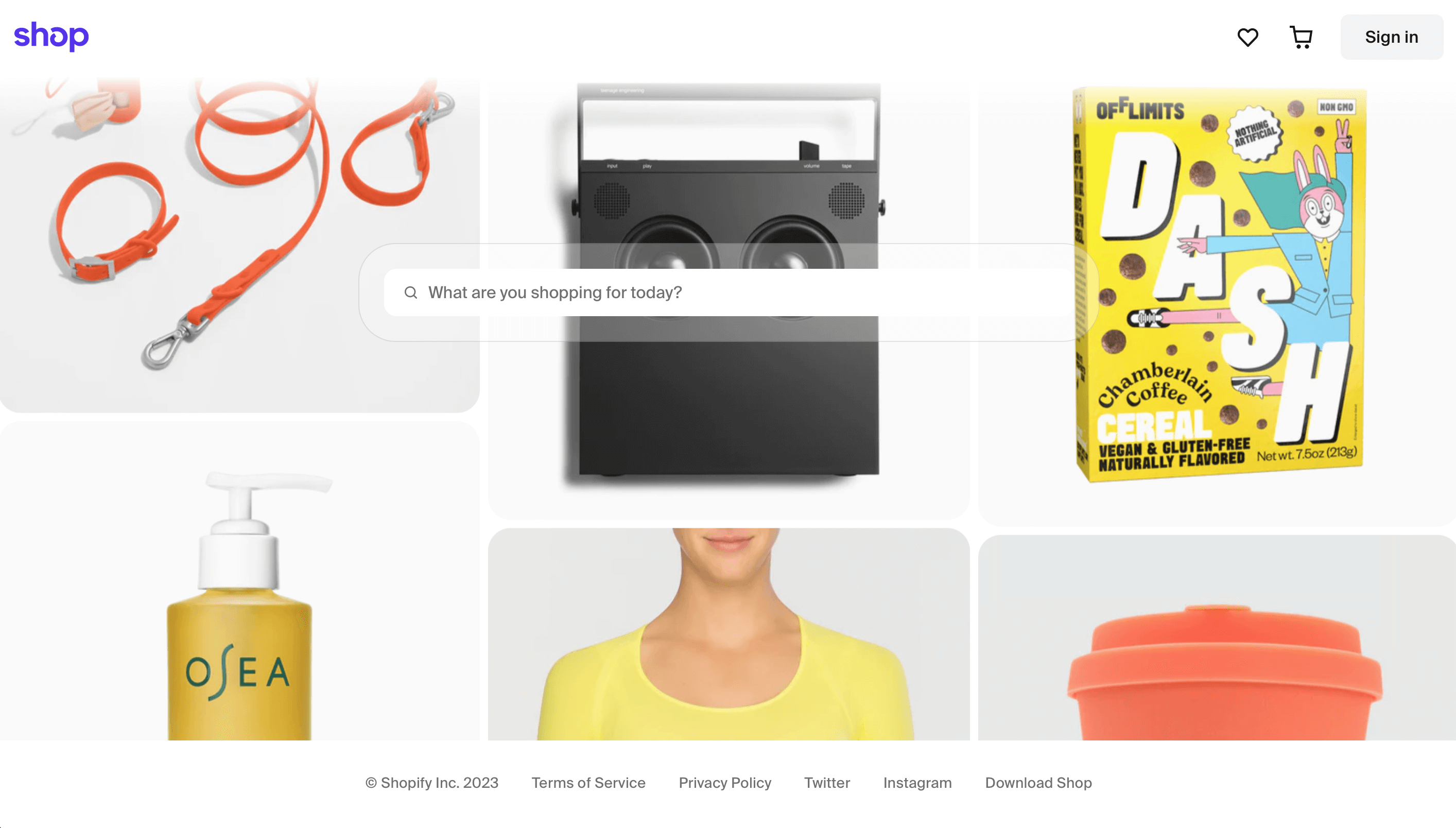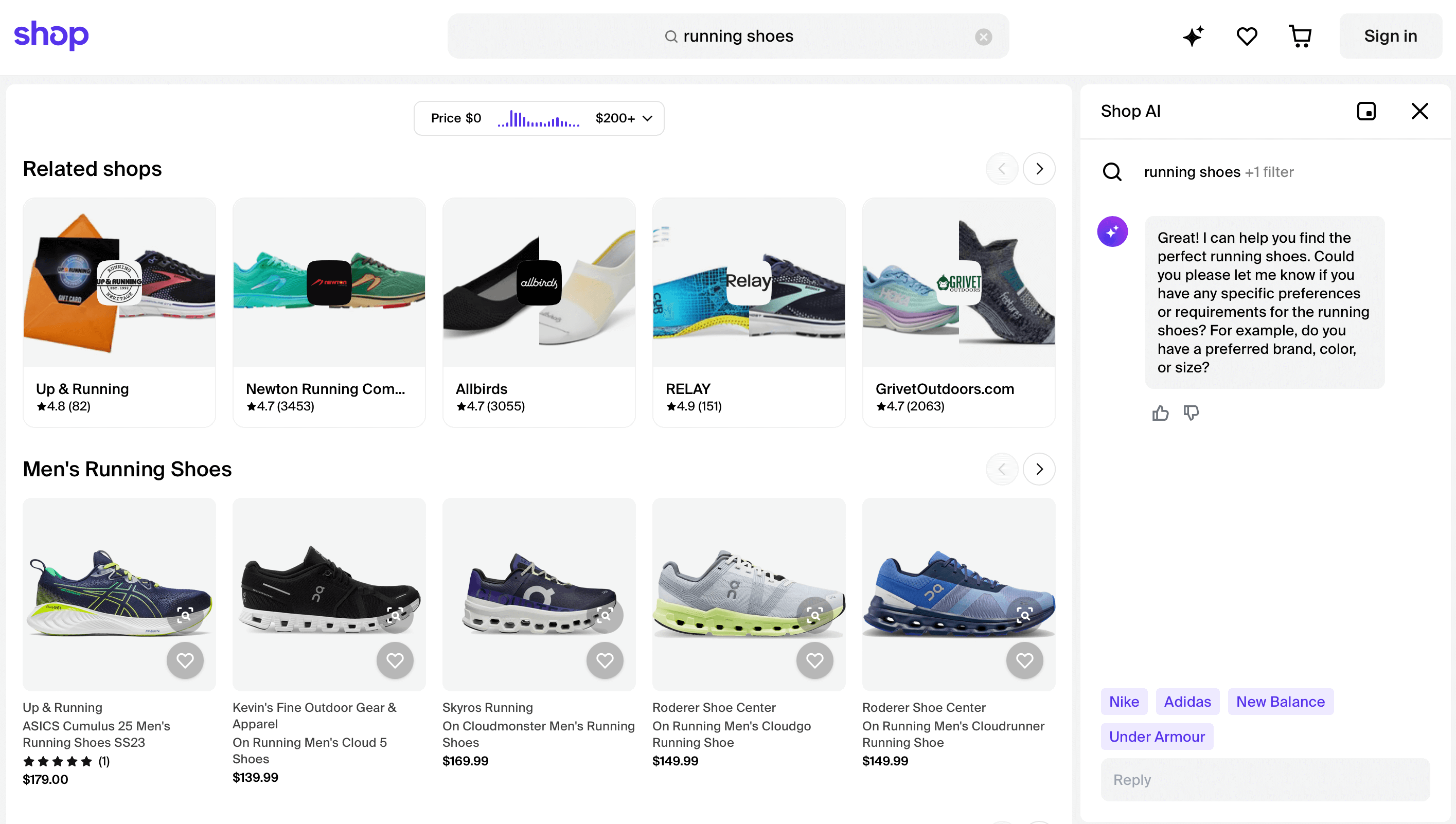Shopify’s marketplace is now available on the web, and from afar, it looks like Amazon or any other online retailer. The new marketplace allows shoppers to search and buy all products hosted on Shopify.
Shopify’s marketplace, available at shop.app/search, starts with a search bar that allows searching for products and merchants among the millions that use Shopify. Each merchant has a storefront, each product has a page with reviews and detailed information, and shoppers can buy items by adding them to a shopping cart.
The same functionality was previously only available in the mobile app Shop. But “by launching Shop on the web, we can enable more buyers to discover and purchase from Shop merchants without having to download an app,” said Shopify in an email to merchants. The marketplace is accessible from a sub-menu on the Shop website, so it’s not meant for mass use yet.


Shopify has repeatedly insisted that it doesn’t want to build a competitor for Amazon. In an interview with Harley Finkelstein, president of Shopify, in May 2021, Niel Patel of The Verge asked, “Do you see yourself headed in that more consumer direction, where you run basically a catalog for lots of independent businesses?” Harley answered, “No. We have no plans to be a marketplace.”
After a decade of building software to power commerce, over the past few years, Shopify started to build a consumer-facing ecosystem and grow Shopify as a brand recognized by consumers. The Shop app and Shop Pay are the core pillars of that. With the marketplace functionality in place, that furthers it along.
But marketplace functionality is not enough to make Shopify a retailer - millions of Shopify merchants wrapped in universal search is a start, but it’s not it. It’s not a replacement for Amazon or other retailers because its assortment is spotty. Nor could it focus on just a few categories because that is already done well by a new wave of brand discovery marketplaces like The Fascination or Thingtesting. Neither could it replicate the social features and user-generated content of Instagram or TikTok.
Being a retailer also means deciding which items rank first in search results. And potentially selling ads to rank higher. These are some of the retailing decisions Shopify didn’t have to make so far by being a neutral software provider. A marketplace cannot arm every rebel equally, as per Shopify’s “arming the rebels” motto.
Shopify would be the second-largest e-commerce retailer in the U.S. if all its merchants were treated as one. This comparison was silly because consumers didn’t go shopping at Shopify. Shopify was invisible to them. Now they can. But it’s not clear yet if Shopify wants them to, as per Harley Finkelstein’s earlier comments, and if so, how far it is willing to push its features, value proposition, and, crucially, marketing. Amazon spent north of $40 billion last year on sales and marketing.

